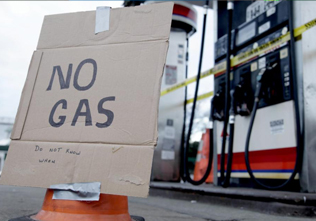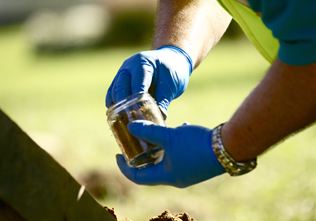The COVID-19 crisis has made hygiene at the forecourt more important than ever. Robotic refueling can help people stay isolated and avoid transmitting the virus. For the retailer it can reduce a big drops in sales and be prepared for the future of mobility. Jonas Thor Olsen believes it is time for robotics.
The COVID-19 pandemic has affected the fuel retail industry in several ways, and the industry is facing a demand that previously wasn’t there - hygienic and safe stations. Not only important for private customers, but even more so for essential services in society such as home nurses, ambulances, police cars, postal services, etc.
On the other hand, the crisis has also reported a massive drop of sales. Last week, Jorge de Benito, president of CEEES, reported up to a 99% drop of sales in an interview with PetrolPlaza.
Why? A reasonable answer is that people drive less when they are in quarantine. Another likely answer is that there is a high risk of infection when grabbing a fuel nozzle hundreds of people have used the same day. When using a nozzle, best case scenario, the customer goes directly back into the car and touches the steering wheel. Worst case scenario, the driver pays in the shop, brings out food and eats it with the same hand that held a nozzle minutes ago. Keeping clean hands after using a nozzle is rarely seen and it still holds a risk for the transmission of bacteria and virus.
For essential services like home nurses, who visit elderly citizens in their homes, hygiene is of the utmost importance. They need to stay in a bubble of sterile hygiene that is broken when doing a necessary activity like refueling a car. There is also the risk of getting approached while refueling – someone recognizes the uniform and inquires about the health situation, another person may be upset about their service. A robotic refueling system will keep them isolated and add time to answer calls and emails in a hectic job.
For private citizens, a robotic refueling system would have same effect. There is less chance of transferring bacteria and virus by staying isolated and safe while refueling. All this could be solved by handing out free plastic gloves. However, don’t forget about convenience. Is it convenient to use plastic gloves even if they are free? Gas stations are investing heavily on being convenient but you still need to grab a dirty nozzle to get fuel.
Robotic refueling not only helps to solve a problem in the context of the pandemic – it will be relevant from hereinafter. It will be relevant no matter the fuel type. The need for the technology will only grow as we move towards more advanced cars and autonomous vehicles.
Autonomous vehicles would have been a great asset during the pandemic. A new future of mobility is waiting. Urban planning in large cities is advancing, tech companies are moving into the production of cars, and car sharing services are spreading out globally. All with one common goal – autonomous mobility.
And who will refuel those cars? They need energy in some form. Human personal dispensing could be an option, like in the old days. But that would mean humans serving the robots – the basic idea of robotics is the opposite.
Where would the first autonomous vehicles go for refueling? To a gas station that is about to implement robotic refueling? Or to a gas station that has several years of experience of robotic refueling with regular cars? One thing is for certain – free plastic gloves won’t help…
The COVID-19 crisis gives a new argument for the implementation of robotic refueling. Hygiene and safety are on today’s agenda for up to date gas stations. A gas station will not only be prepared for the future of mobility but also for tomorrow by helping key functions of society. After the coronavirus crisis, we will still have home service nurses with the same demand, postal services, police, etc. And we will still see seasonal diseases costing society resources.
It’s time for the retail industry to look at the possibilities of increasing hygiene and personal safety at forecourts. The demand was not there before, but it is now, and it will continue to be after the crisis.
Written by Jonas Thor Olsen, Partner & CEO of Autofuel.







